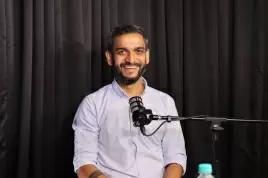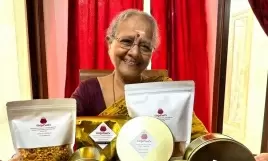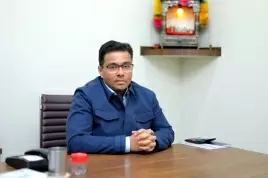Giving a typeface to the faceless

27-August-2010
Vol 0 | Issue 0
“People in slums are not helpless or weak. They can endure anything and survive anywhere. Tell me, do you think a person from a middle class family can survive in a slum even for a day? Now tell me, who is weaker?” asks Isaac Arul Selva, with a smile. Selva is the founder, editor and publisher of Slum Jagathu (Slum World), a monthly magazine produced entirely by people living in the slums of Bangalore.
“There is a tendency among government agencies and NGOs to reduce problems of the slums to that of urban housing, but the real issue is that of ostracism. Almost 75 percent of people living in slums are so called untouchables or people belonging to the minority groups. In the villages, (those who are branded as) untouchables are made to live in colonies outside the main village; in the cities they are made to live in the slums,” he says.
Selva believes that if the rich and the middle classes, whose lives are made easier by maids and drivers living in the slums, continue to ignore the issues of the urban poor it could have serious repercussions in the future. But if they want to know more about them, there is no better place to start than Slum Jagathu.
 |
| Voice for the voiceless |
“Others have been representing us for years; but with Slum Jagathu, for the first time we are telling our own stories,” says Selva. In the ten years since Slum Jagathu was started, many across Karnataka have had a chance to tell their own stories about life in the slums. Stories about problems of basic amenities, of government apathy, investigative stories, along with poems and plays have all appeared in the pages of the magazine. “Ninety percent of contributions to our magazine come from people living in the slums,” says Selva.
Selva dropped out of school when he was in class 4 and worked odd jobs in a restaurant. Now the 40-year old works as a web design consultant. He started his journalism career as a freelance contributor for Slum Sudhi, another magazine about life in slums. When that magazine closed down in 2000, Selva and a few others started Slum Jagathu. “We started the magazine with Rs 168. Our printers extended us credit for the publication of our first edition and we paid them back once we got the money from the sales.”
Ten years on, things haven’t changed much. Even though over 2000 copies of Slum Jagathu – priced at Rs 5 a copy - are sold every month, the income just about makes ends meet. What helps to keep the cost down is the fact that production of the magazine is entirely volunteer-driven. Except for a couple, his production staff changes around constantly.
Selva says he doesn’t mind this constant change as he has no intention of building an institution. “Most people tend to lose track of what they started out to do and instead concentrate on only building institutions,” he says. One of the main reasons for bringing out the magazine is to document the lives of the urban poor in their own words. The magazine, according to Selva is used by a lot of researchers as a primary source of information about the lives of the urban poor. “It gives them an insider’s perspective on the problems faced by people living in the slums,” says Selva.
Selva and Slum Jagathu also organise workshops for budding journalists from the slums. Each workshop has about 40 students. They are given a 4-day course, covering all aspects of journalism. “We help them get over their fear of writing,” he says. According to Selva, many of them have already joined the mainstream media. “Maybe one day we will have our own lobby in the mainstream media and maybe then stories about the urban poor will get the coverage they deserve,” he concludes with hope.
















